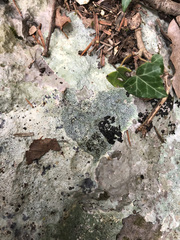Honey fungus
Armillaria mellea
Armillaria mellea, commonly known as the honey fungus, is a species of pathogenic fungus in the Basidiomycota division. It is renowned for its capacity to form extensive underground networks, making it one of the largest living organisms on Earth. In Spanish, it is often referred to as seta de miel.
This mushroom species is distinguished by its honey-colored cap, which is typically smooth and can range from light yellowish to dark brown. The caps measure between 3 to 15 cm in diameter, and the gills are initially white, turning pinkish-brown as they mature. The stem is robust and fibrous, often featuring a distinctive ring.
Armillaria mellea is widely found in the forests of the Comunidad Valenciana, particularly during the autumn months, thriving in humid and wooded areas. It typically grows in clusters at the base of trees, both living and dead, where it acts as both a saprophyte and a parasite.
The fungus is sometimes considered a delicacy for culinary use, but it requires careful preparation since it contains mild toxins when raw, which can be neutralized when cooked.
- Edibility: Edible when properly cooked.
- Habitat: Predominantly found in woodlands; parasitizes on both hardwood and softwood trees.
- Distinctive Features: Honey-colored cap, prominent gill, ringed stem.
- Distribution: Nearly cosmopolitan, with a strong presence in temperate regions.
Armillaria mellea plays a crucial ecological role by decomposing wood, recycling nutrients back into the ecosystem. However, it is also known to cause root rot, making it a significant concern for forestry and agriculture.






